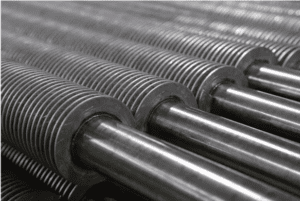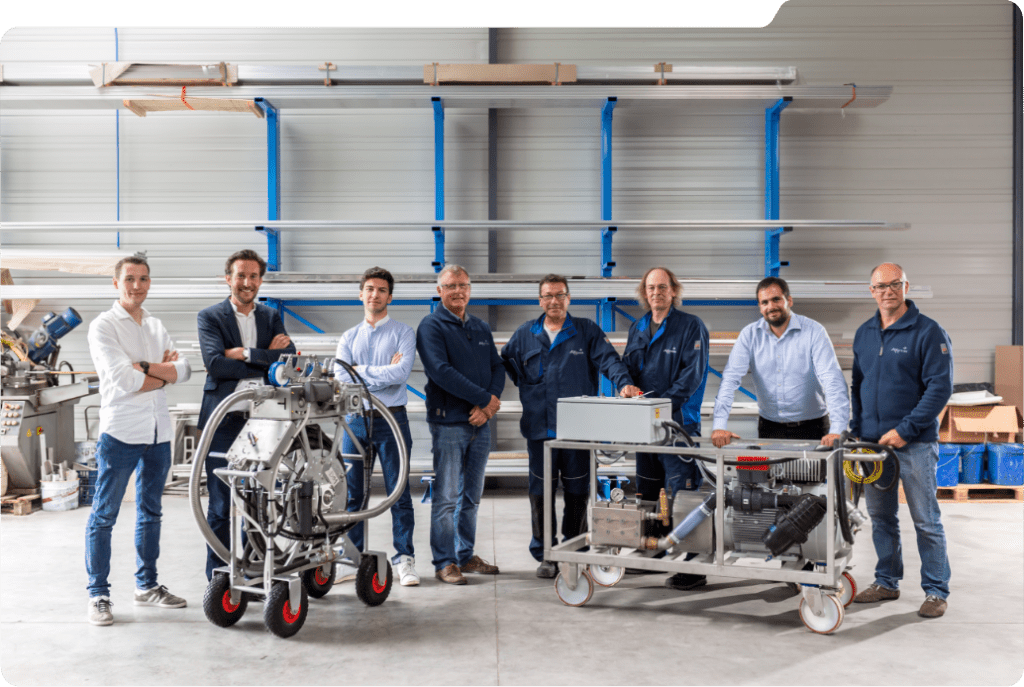- Our PlaygroundOur PlaygroundDiscover Ax System's innovative solutions for maintaining the performance of your industry. Designed to meet the unique needs of each industry, our systems provide effective and efficient cleaning for a range of applications. Whether you're in power generation, oil and gas or any other sector, our tailor-made solutions ensure optimum performance and longevity of your equipment.
- Our SolutionsOur SolutionsDiscover AX System's range of products, designed to meet a variety of industrial cleaning needs. Our products fall into our main categories: Air Cooler and Air Condenser Cleaning, Industrial Misting, Custom Industrial Cleaning, and Industrial Machine Cleaning Services.
We offer specific solutions to meet your unique needs. For instance, we provide Filter Press Cleaners, Electromagnetic Filter Cleaners, and Rotary Filter Cleaners. - What we cleanWhat we cleanDiscover our expertise in high-pressure cleaning for a variety of industrial equipment! Our know-how enables us to work on air condensers, heat exchangers and many other installations. Thanks to our specialized approach, we guarantee optimum performance and enhanced durability for these vital pieces of equipment.
- Our Achievements
- About Us
- Contact
Fin Tubes Technologies
Fins are placed on the tubes of a heat exchanger to increase its efficiency by allowing a more effective heat transfer between the hot fluids and the cold air. Each finned tube technology has its own mechanical resistance properties, requiring a perfect mastery of these technologies to determine the appropriate cleaning processes. For example, in a multi-row configuration where tubes are staggered, a cleaning head with orientable jet nozzles is needed to follow the angle formed by the tubes.
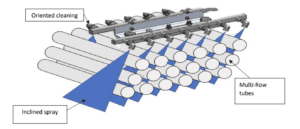
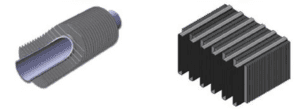
There are several materials used for these tubes and fins:
- Carbon Steel
- Stainless Steel
- Copper
- Aluminium
Heat exchangers can feature two types of fin configurations:
Single ROW:
Single row heat exchanger technology is designed to optimize thermal efficiency and performance in various cooling and heating applications. This technology is particularly advantageous in environments where space and efficiency are crucial. Unlike multi-row configurations, single-row heat exchangers feature a single line of tubes, which can significantly enhance heat transfer characteristics due to several key factors:
Reduced Airflow Resistance: Single-row designs minimize resistance on the air side, allowing smoother airflow through the tubes. This reduction in resistance not only improves thermal performance but also reduces energy consumption by decreasing the workload on fans or blowers.
Enhanced Cleaning Capability: Accessibility of each tube in a single-row configuration is greatly improved compared to multi-row systems. This accessibility facilitates more effective cleaning and maintenance, ensuring that the heat exchanger operates at optimal efficiency for longer periods. This is particularly beneficial in environments prone to fouling or where regular maintenance is critical.
Improved Heat Transfer Efficiency: Single-row heat exchangers are engineered to maximize the available surface area for heat transfer, despite the reduced number of tubes. This is achieved through strategic placement and spacing of the tubes, as well as the use of advanced fin designs and materials. The result is a highly efficient heat exchange process, which can be crucial in applications requiring precise temperature control.
Versatility and Customization: Given their simplified structure, single-row heat exchangers can be easily customized to fit specific applications, ranging from HVAC systems to industrial processes. Manufacturers can adjust tube lengths, diameters, and fin geometries to meet unique thermal performance requirements.
Lower Cost and Weight: The streamlined design of single-row heat exchangers often results in lower material costs and reduced weight. This makes them an economical choice for many applications, without compromising performance or durability.
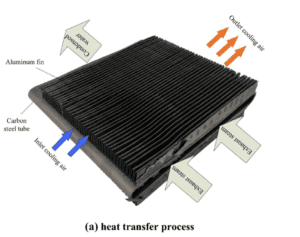
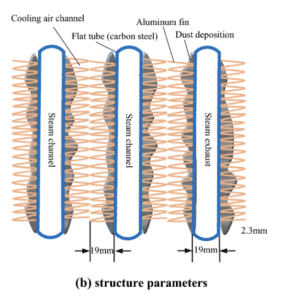
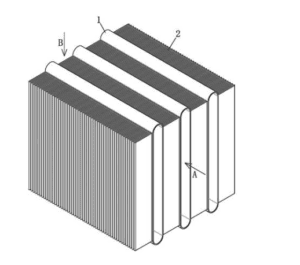
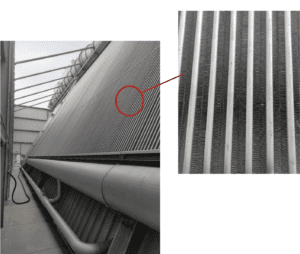
Multi ROW
Multi-row heat exchanger technology is engineered to maximize heat transfer in compact spaces, offering an effective solution for applications that require high cooling or heating capacities. Unlike single-row configurations, multi-row heat exchangers feature several lines of stacked tubes, which increase the contact surface for heat transfer.
Advantages of Multi-Row Heat Exchangers:
Increased Heat Transfer Capacity: With more tubes, these exchangers provide a larger contact surface between fluids, enabling more efficient heat transfer. This is especially useful in applications where space is limited but a high heat transfer capacity is necessary.
Airflow Resistance: Although multi-row configurations may present increased resistance to airflow compared to single-row systems, advances in fin and tube design help minimize this drawback, thereby optimizing airflow and overall efficiency.
Application Flexibility: Multi-row heat exchangers are suitable for a wide range of applications, from air conditioning systems to demanding industrial processes, due to their ability to efficiently handle high volumes of heat transfer.
Space Optimization: Despite their increased capacity, these exchangers are designed to occupy minimal space, thanks to a compact arrangement of tubes. This feature makes them ideal for installations where available space is a critical factor.
Maintenance and Cleaning: Maintenance can be more challenging due to the density of the tubes, but innovative design solutions, such as facilitated access paths and fouling-resistant materials, help mitigate these challenges.
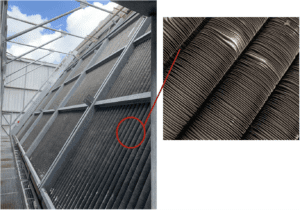
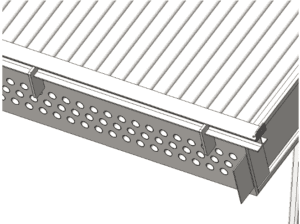
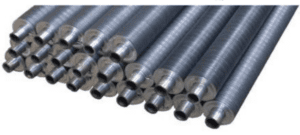
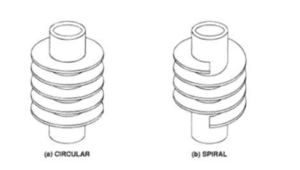
L-footed spiral fin
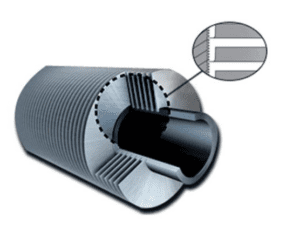
Crimped spiral fin
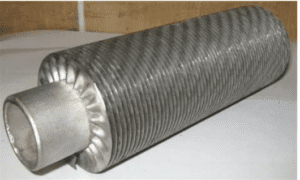
Embedded finned tube:

Serrated spiral fin:
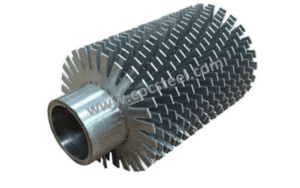
Welded spiral fin:
